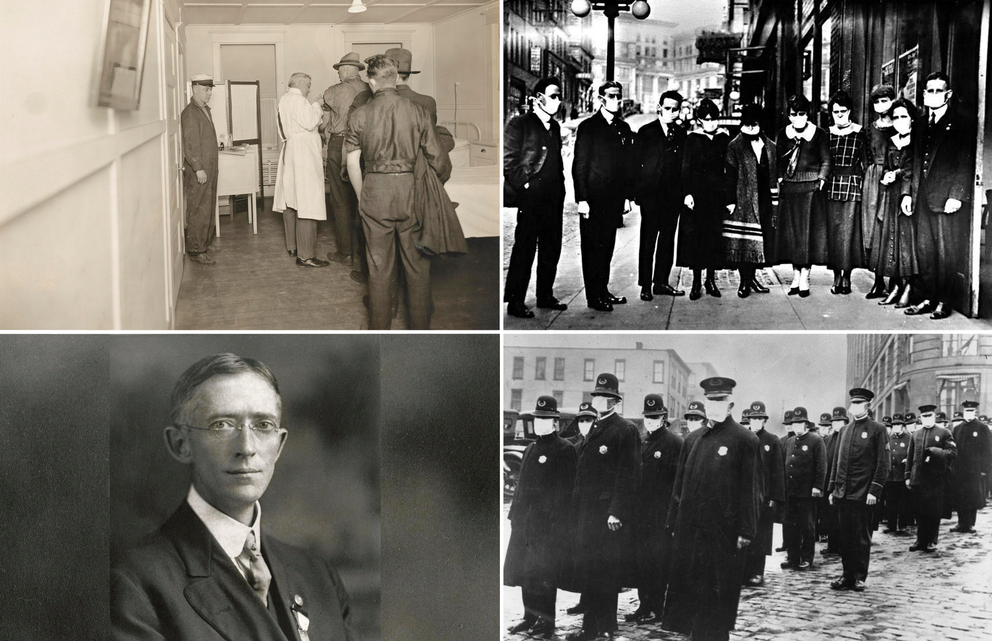Since January, when the coronavirus arrived in the Pacific Northwest, Crosscut has attempted to bring the past to bear on our current crisis. In a series exploring the Spanish flu, Crosscut’s editor-at-large, Knute “Skip” Berger, reminds readers that the world’s last great pandemic hit the booming Puget Sound region in the fall of 1918. Then riding a wave of wartime production, Seattle was brought to its knees by the virus. It killed between 1,400 and 1,600 people in just two years; across the state, nearly 6,000 lives were lost to the flu.
Seattle’s experience with the 1918 pandemic is reminiscent, in many ways, of our current fight against COVID-19. To contain the outbreak, officials shut society down. The public grumbled then, as now, about restrictions on personal freedom. Masks were mandated on public transit. As cases spiked in the Seattle area, health care was rationed. The Washington state health commissioner, Dr. T.D. Tuddle, tried valiantly to relay to the public the best information science could offer, but uncertainty was rampant. “The character of the disease,” Tuttle wrote, “is that we are in the dark, to a large extent, as to a means that will prevent its spread.” Soon, however, social isolation seemed to slow the forward march of the virus. But when those measures were relaxed, and a restless public came together for the holidays, a second wave hit.
Relying on family records, historical archives and contemporary histories of the Spanish flu, Berger’s series on the 1918 pandemic is an exercise in reconstructing public memory. Many will read these stories as offering lessons; others will note the ways in which the past rhymes with the present; still others will shake their head at our tendency toward folly. The historical record shows that all of this is true — what’s important is that we remember. If the many notes Berger has received from readers in response to his series are any indication, the act of remembering triggers more memories, not just from politicians and doctors, but also from ordinary people whose modest lives were irrevocably changed by an epochal moment.
The flu subsided in 1920, but it continued to wreak havoc in the years that followed. Newspaper reports from the period suggest that people in Seattle struggled with suicide in the late stages of the pandemic. At least one study argued that social isolation, along with the grief of losing loved ones to the virus, may explain the soul-crushing angst that pervaded the society. As the coronavirus continues to claim lives across the globe, a similar angst is with us now. It is worth noticing this suffering and committing it to memory, so that we may share with future generations what it was like to live through history.
READ KNUTE BERGER'S 1918 FLU SERIES
- Before coronavirus: How Seattle handled the Spanish flu
- Premature optimism in a pandemic can be deadly
- Shady landlords and bootleggers ruled Seattle's last pandemic
- Meet the Anthony Fauci of 1918 Washington
- Podcast | What the 1918 flu can tell us about life after COVID-19
- Seattle struggled with suicide in late stages of the 1918 flu
- Seattle always had anti-vaxxers — even during smallpox
- Public health cynics hated pandemic interventions in 1918, too
- The mask wars of the 1918 flu pandemic
This story was first published in Crosscut's Weekly newsletter. Want to hear more from editors like Mason Bryan? Sign up for the newsletter, below.
Get the best stories of the week
This weekly newsletter dives deeper into one story and how it was reported, along with curating the best stories of the week.



